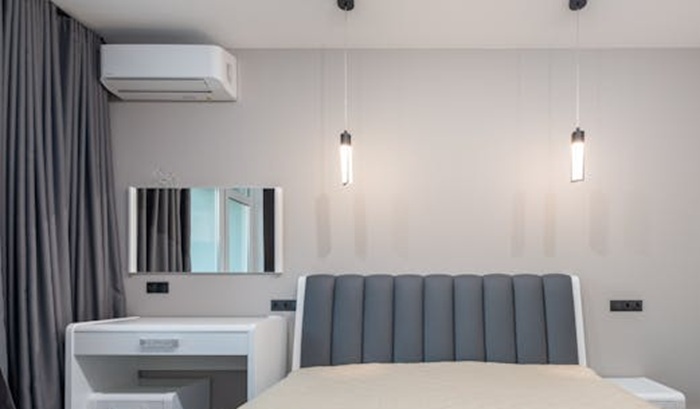
Before using the AC during the summer, inspect the air filter, clean the vents, and check thermostat settings for better airflow and energy efficiency. Check the outside unit for blockages and test the circuit breaker.
Proper maintenance, such as a yearly professional tune-up, is important to help maintain the AC in good condition and prolong its life with AC maintenance service from Beltway Air Conditioning & Heating in Columbia, MD.
Why AC Maintenance Before Summer Matters
A properly maintained air conditioner runs more efficiently, keeping your home cool while reducing energy use. A well-maintained AC can lower energy bills by up to 30% when functioning properly.
Regular maintenance prevents unexpected breakdowns by catching small problems before they turn into costly repairs. Dust buildup, clogged coils, and refrigerant leaks strain the system, making it work harder and wear out faster. Keeping your AC in good shape also improves indoor air quality by reducing dust, allergens, and humidity levels.
Inspect and Clean Important Components
Before you start using your AC, inspect key components to make sure everything is working as it should. A thorough cleaning can prevent performance issues and help your unit cool more effectively.
1. Clean Air Vents Thoroughly
Dust and debris can block airflow, making your AC work harder. Use a vacuum attachment to clean vent openings and remove buildup from hard-to-reach areas. If vent covers are damaged or clogged, replace them to allow proper airflow. Keeping vents open and unobstructed helps cool air circulate efficiently throughout your home.
2. Check and Replace Air Filters
A dirty air filter forces your AC to work harder, raising energy costs and lowering indoor air quality. Check filters monthly and replace them as needed. If you have pets or allergies, using MERV-rated, pleated, or HEPA filters can help trap more dust, pet dander, and allergens.
3. Clean the Outdoor Condenser Unit
The outdoor condenser unit collects dirt, leaves, and debris, reducing airflow and cooling capacity. Use a garden hose to gently rinse the coils and fins. Avoid high-pressure water, as it can bend the fins. Also, check for rust, cracks, or loose panels and ensure the unit is sitting level for proper function.
4. Inspect and Clear Drain Lines
A clogged AC drain line can cause water damage, mold growth, and system malfunctions. Check the drain pan for standing water and use a wet/dry vacuum to clear out blockages. Flushing the drain line with a vinegar-water solution or a commercial cleaner can help prevent future clogs.
5. Remove Debris Around the Outdoor Unit
For better airflow, maintain at least two feet of clear space around the outdoor unit. Remove leaves, grass clippings, and any other obstructions that could block ventilation and cause the system to work harder.
Check for System Damage
A quick inspection can help catch potential issues before they turn into major problems.
1. Examine Ductwork for Leaks or Damage
Leaky ductwork can cause air loss of up to 20%, leading to higher energy bills and uneven cooling. Look for holes, gaps, or disconnected sections, especially in attics or crawl spaces. Use duct tape or mastic sealant for minor leaks, but for widespread damage, professional repairs are recommended.
2. Inspect Refrigerant Lines for Issues
Refrigerant lines should be free of cracks, leaks, or corrosion. If you notice ice buildup on the evaporator coil, this could indicate low refrigerant levels or airflow problems. If the AC isn’t cooling properly, have a technician check refrigerant levels and fix any leaks.
3. Check Electrical Wiring for Damage
Loose or damaged electrical connections can be dangerous and cause system failure. Open the electrical panel to check for loose wires, corrosion, or burnt spots. If you see signs of damage, contact an HVAC professional for an inspection.
4. Inspect the Blower Fan for Obstructions
A dirty or blocked blower fan can reduce airflow and affect cooling performance. Clean the fan blades to remove dust buildup and check for any unusual noises that could indicate a problem.
Also Read: Audi AC Repair and Maintenance in Dubai
Test System Functionality
After cleaning and inspecting your AC, run a system test to make sure everything is working as expected.
1. Test the Thermostat for Accuracy
Set your thermostat to cooling mode and compare the displayed temperature to a separate thermometer in the room. If they don’t match, recalibrate the thermostat or replace the batteries. A properly working thermostat can help lower cooling costs and keep your home comfortable.
2. Check the Circuit Breaker and Power Supply
If the AC doesn’t turn on, check the circuit breaker to make sure it hasn’t tripped. Also, inspect the power supply and confirm there are no blown fuses or voltage issues.
3. Perform a System Test Run
Turn on the AC and let it run for a few minutes. Listen for unusual noises, check for steady airflow, and make sure the system reaches the set temperature. If you notice weak airflow, warm air, or unusual sounds, schedule a professional inspection.
Get Your AC Ready for Summer
Taking the time to inspect, clean, and test your AC before summer keeps it running efficiently, prevents costly breakdowns, and helps lower energy use. Simple maintenance steps like changing air filters, checking refrigerant levels, and cleaning the condenser unit can help your AC cool more effectively and last longer.
For professional AC maintenance and repairs, trust Beltway HVAC to keep your system in top shape. Schedule a tune-up today and enjoy a cool, worry-free summer!
Beltway Air Conditioning, Heating and Plumbing
5550 Sterrett Pl STE 202, Columbia, MD 21044








